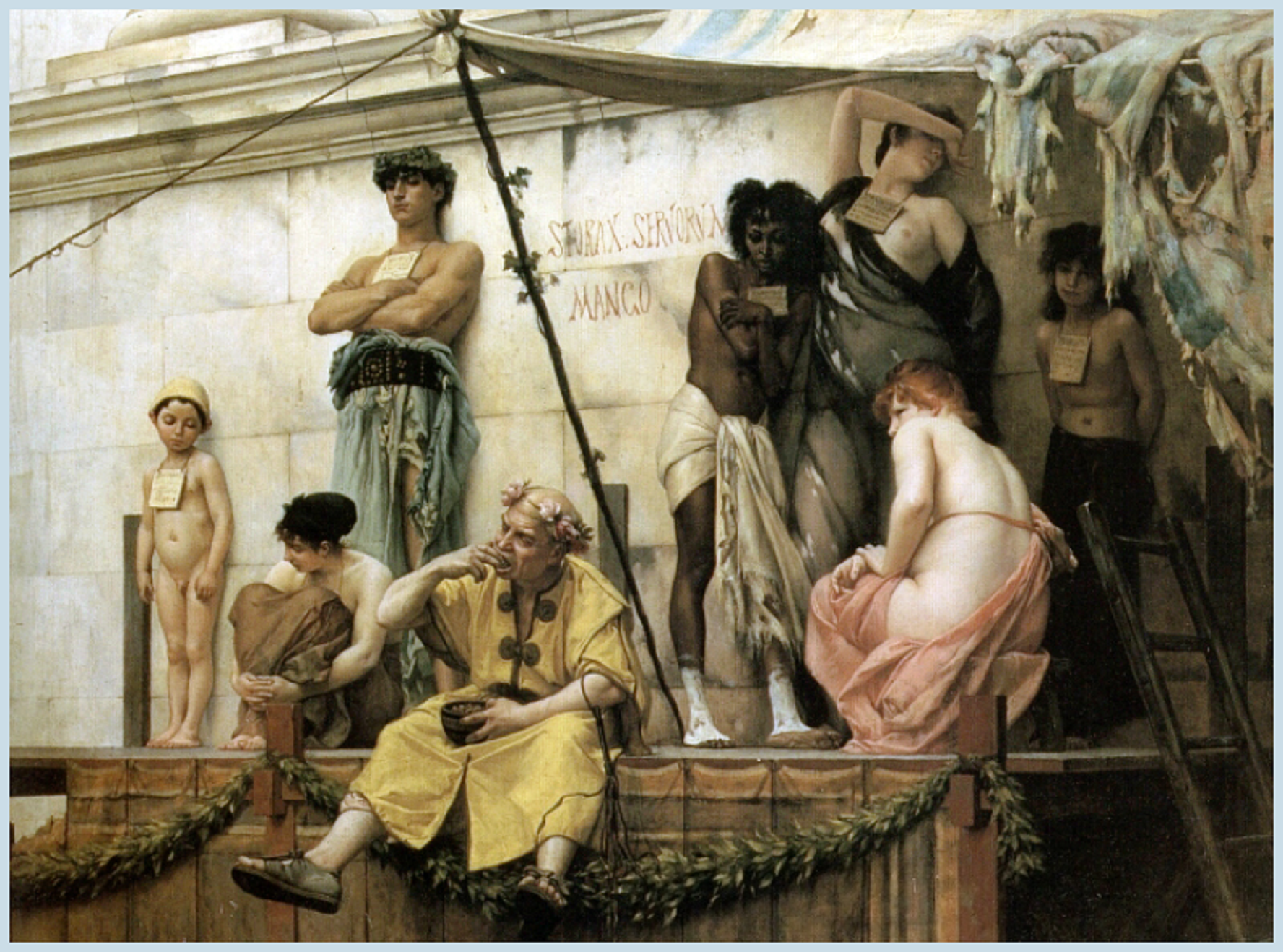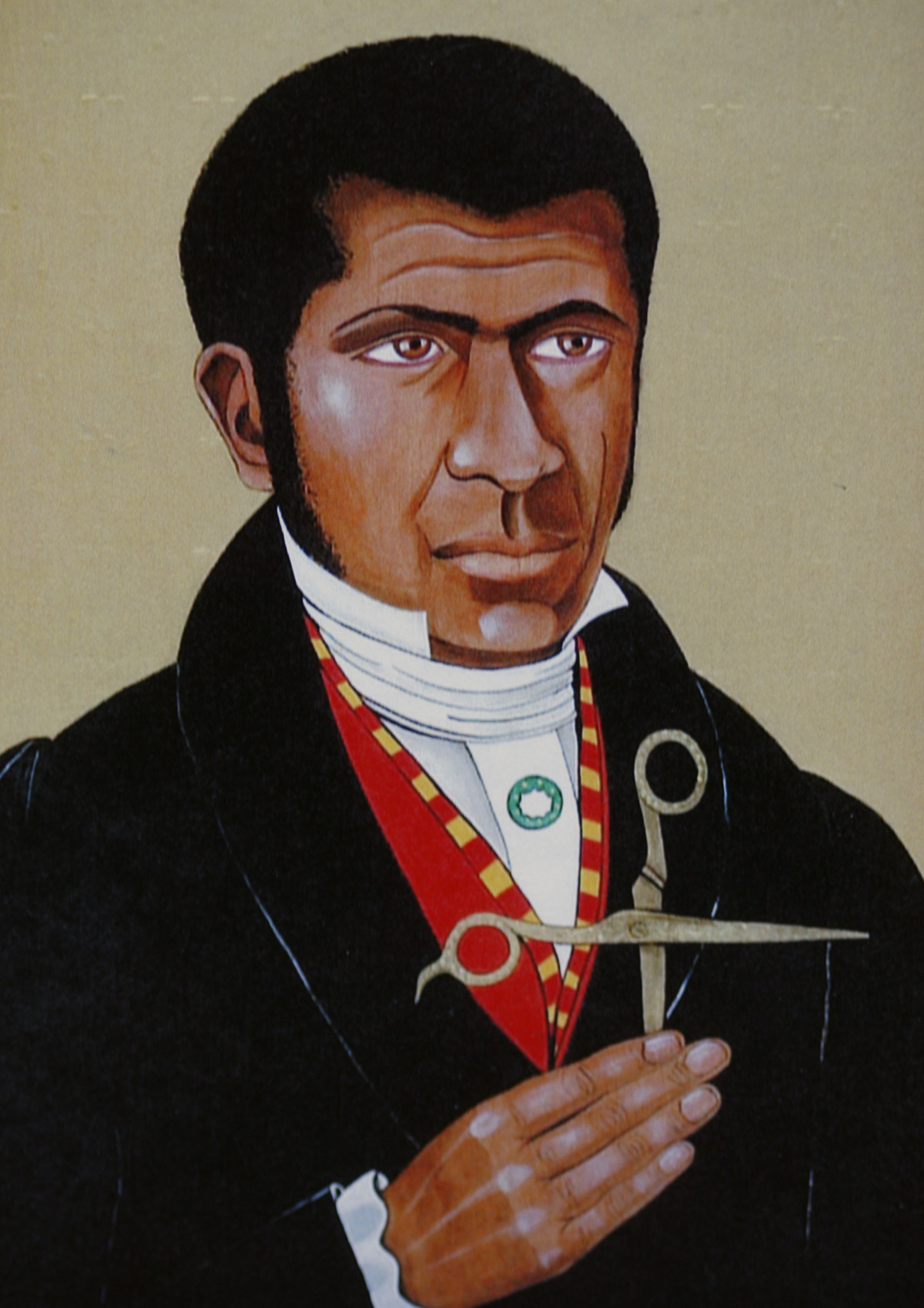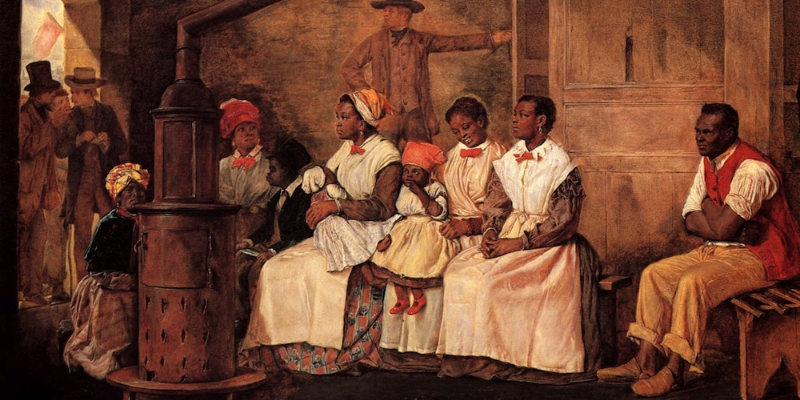Tyranny results in oppression and oppression demands revolt. Art has and always will be a revolutionary force that not only calls out propaganda and the unjust but also encapsulates a moment in history that accommodates agony and strength. Following are 10 depictions by great artists and revolutionaries illustrating Slavery through their palettes. These artists use their art as a form of rebellion and insurgence by showcasing hundreds of years of suffering and abuse.
1. The Slave Ship

The painting by JMW Turner was originally titled “Slavers Throwing Overboard the Dead and Dying – Typhon Coming on”. In the painting, Turner depicts a ship sailing in a chaotic sea with scattered human bodies in the waters. The painting exhibited in 1840, is said to be inspired by the slave ship Zong.
2. The Slave Market

This piece by French artist Gustave Boulanger is titled, “Un Maquignon d’esclaves a Rome” which translates to “A slave dealer in Rome”. It depicts an auction which holds humans ranging from children to adulthood being “sold” as slaves.
3. The Old Plantation

The Old Plantation is famous for its non-stereotypical depiction of slaves as it features them pursuing their own interests. For several years the artist of the painting was unknown and disputed until 1935, in a book by Susan P. Shames titled, “The Old Plantation: The Artist Revealed” wherein she argued that the artist of the painting was John Rose, the plantation owner.
4. A Roman Slave Market

A Roman Slave Market by Jean Leo Gerome is an 1866 oil on canvas. It depicts the selling of a woman wherein in an Eastern descent buyer is examining the teeth of a fully nude woman. Gerome was known for his stereotyped depiction of the Orient in an attempt to make exoticized and erotic paintings portraying the East as mysterious and savage.
5. Portrait of Madeleine

Exhibited in 1800, Portrait of Madeleine is painted by artist Marie-Guillemine Benoist. The portrait is a depiction of a confident young black woman seated in a gilt armchair against a light background. Wearing a white headdress and dress, she gazes directly at the viewer, showcasing Benoit’s skill in portraying realistic dark skin tones.
6. Turkish Slave

This painting titled Schiava Turca or Turkish Slave is by painter Parmigianino painted in the 1530s. The interpretations of the painting are unclear as it is disputed to either be a courtesan, due to her headdressing, or a noblewoman.
7. The White Slave
Joaquin Sorolla y Bastida’s canvas, a rare social realism example, reflects the genre’s popularity in 1890-1899 Europe, particularly in Salons. Depicting sleeping prostitutes in a railway carriage, the painting skillfully addresses formal challenges, notably forced perspective, creating viewer engagement despite the oblivious subjects.
8. Portrait of Juan De Pareja

Diego Velázquez’s “Portrait of Juan de Pareja,” painted in 1650, depicts the enslaved Juan de Pareja, a talented painter owned by Velázquez. Completed in Rome, it is the earliest known portrait of a Spanish man of African descent. Purchased by the Metropolitan Museum of Art in 1970 for over £1,000,000, it’s hailed as a significant acquisition.
9. Slaves Waiting for Sale

The oil painting “Slaves Waiting for Sale in Virginia” by Eyre Crowe debuted at the Royal Academy in 1861 and was later featured in the ‘Black Victorians’ exhibition that took place in 2005–2006. Inspired by Crowe’s visit to the slave auction chambers in Richmond, it is owned by the Heinz Collection in Washington, D.C. Positive reviews were given to the artwork because of its realistic depiction of the characters, which captured the brutal realities of slave life.
10. Pierre Toussant: Portrait

Born a Catholic slave in Haiti, Pierre Toussaint fled the French colony and made his way to New York. After completing his hairdressing apprenticeship, he succeeded and discreetly helped his owner’s widow, who eventually set him free. Toussaint got married, accumulated fortune, and committed his life to fighting racism and religious intolerance while promoting philanthropic initiatives. After he died in 1853, there was a period of intense grief, and 13 years later, Pope John Paul II made him a Venerable, the first step on the path to sainthood.
Read Also:





